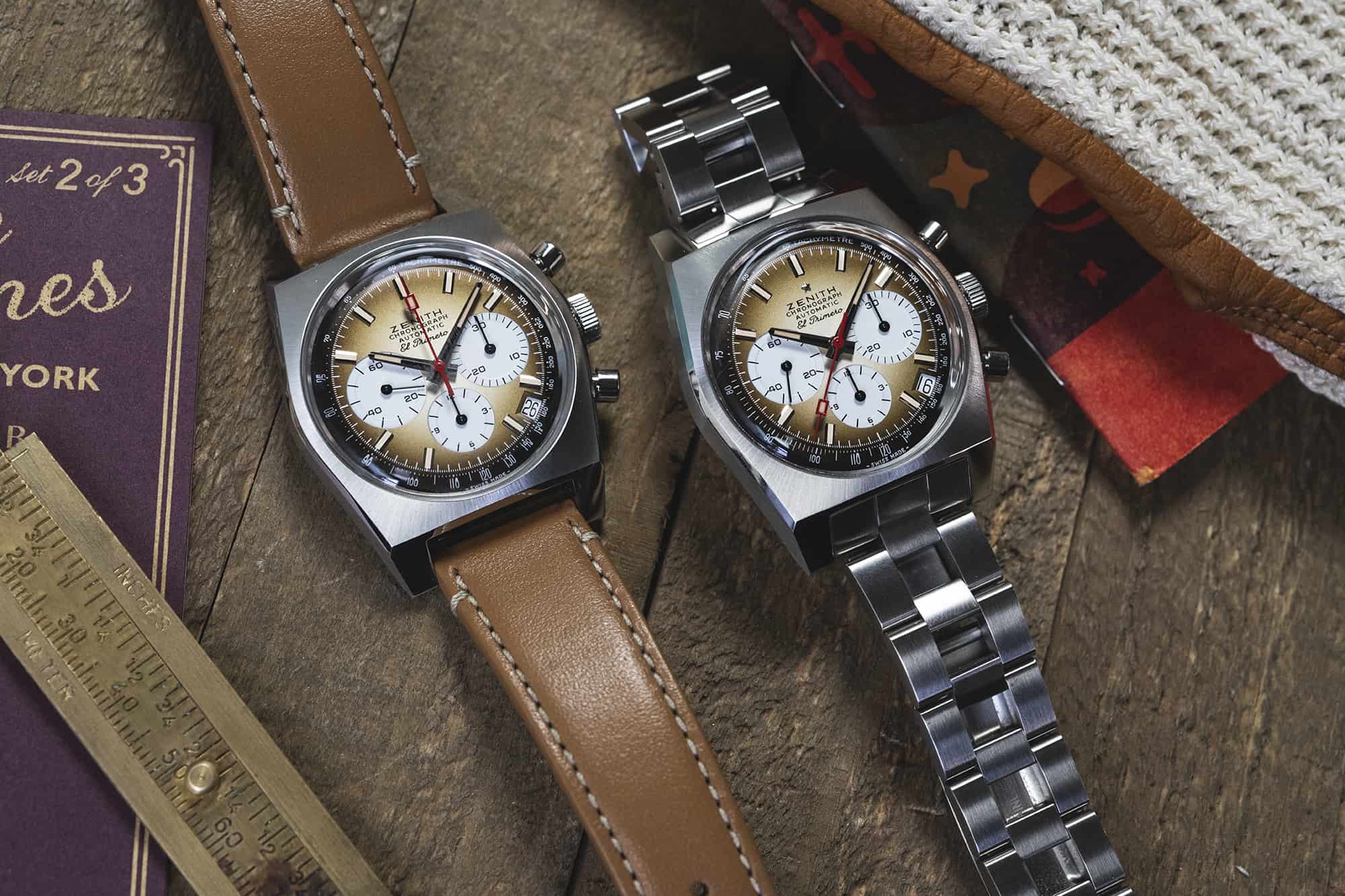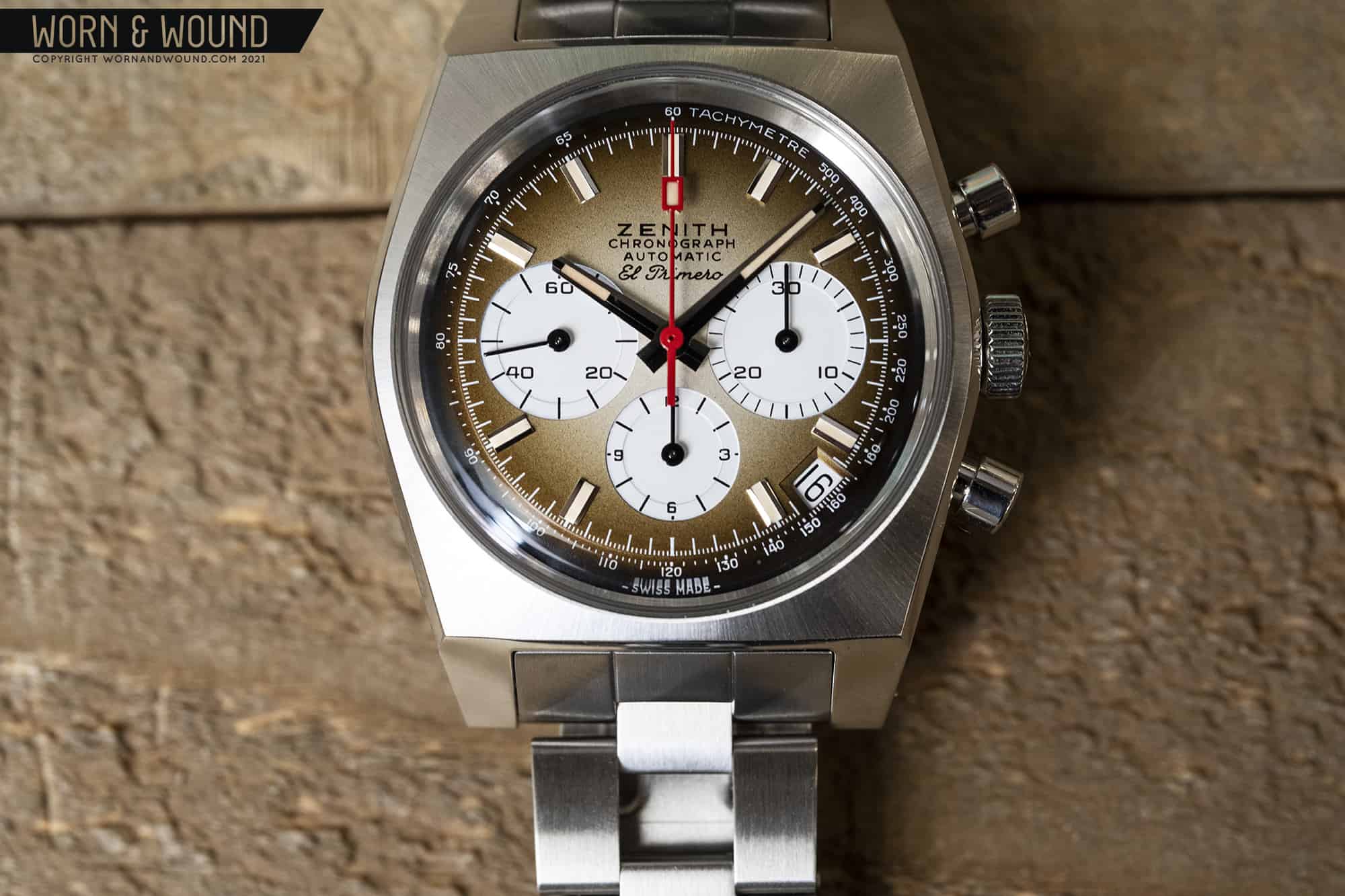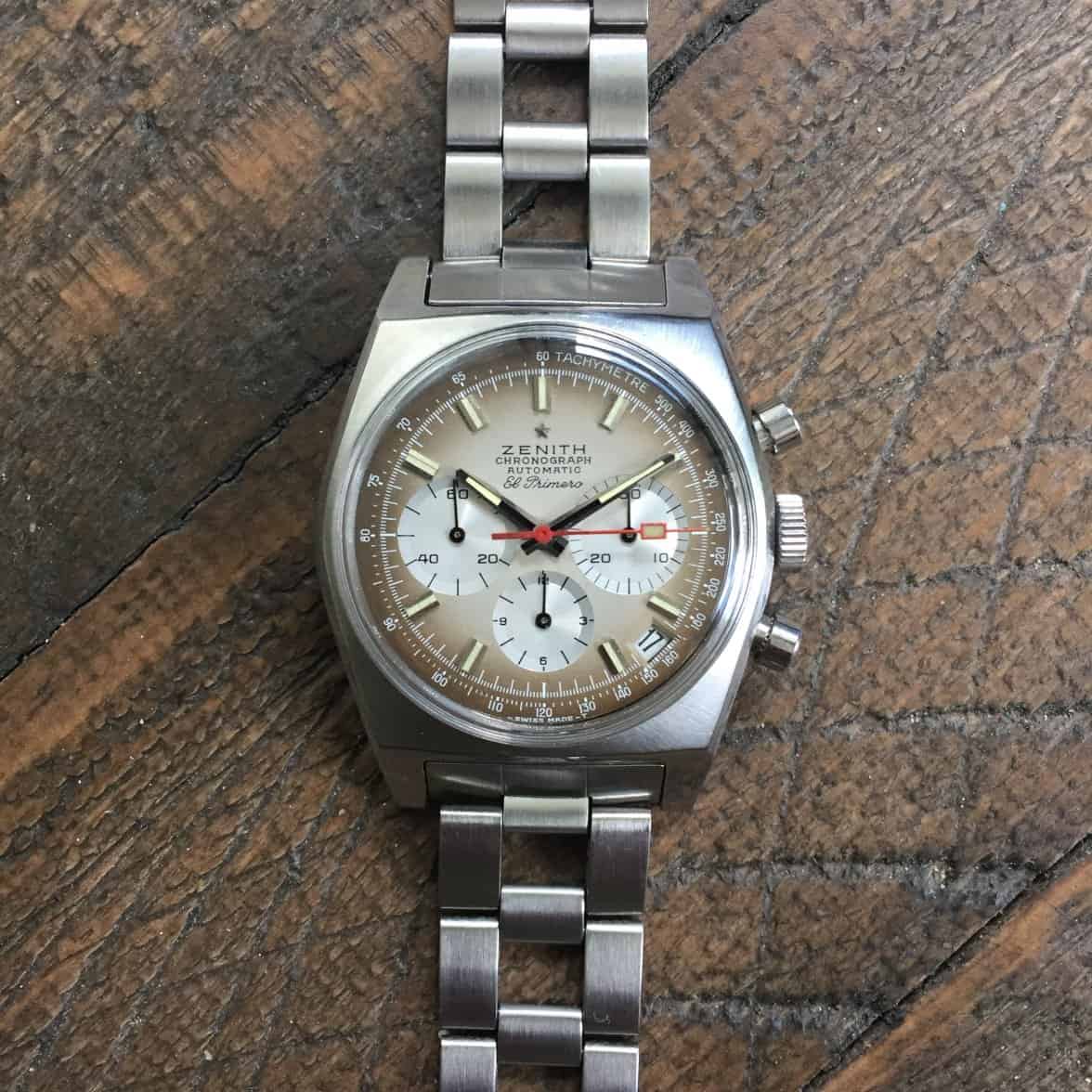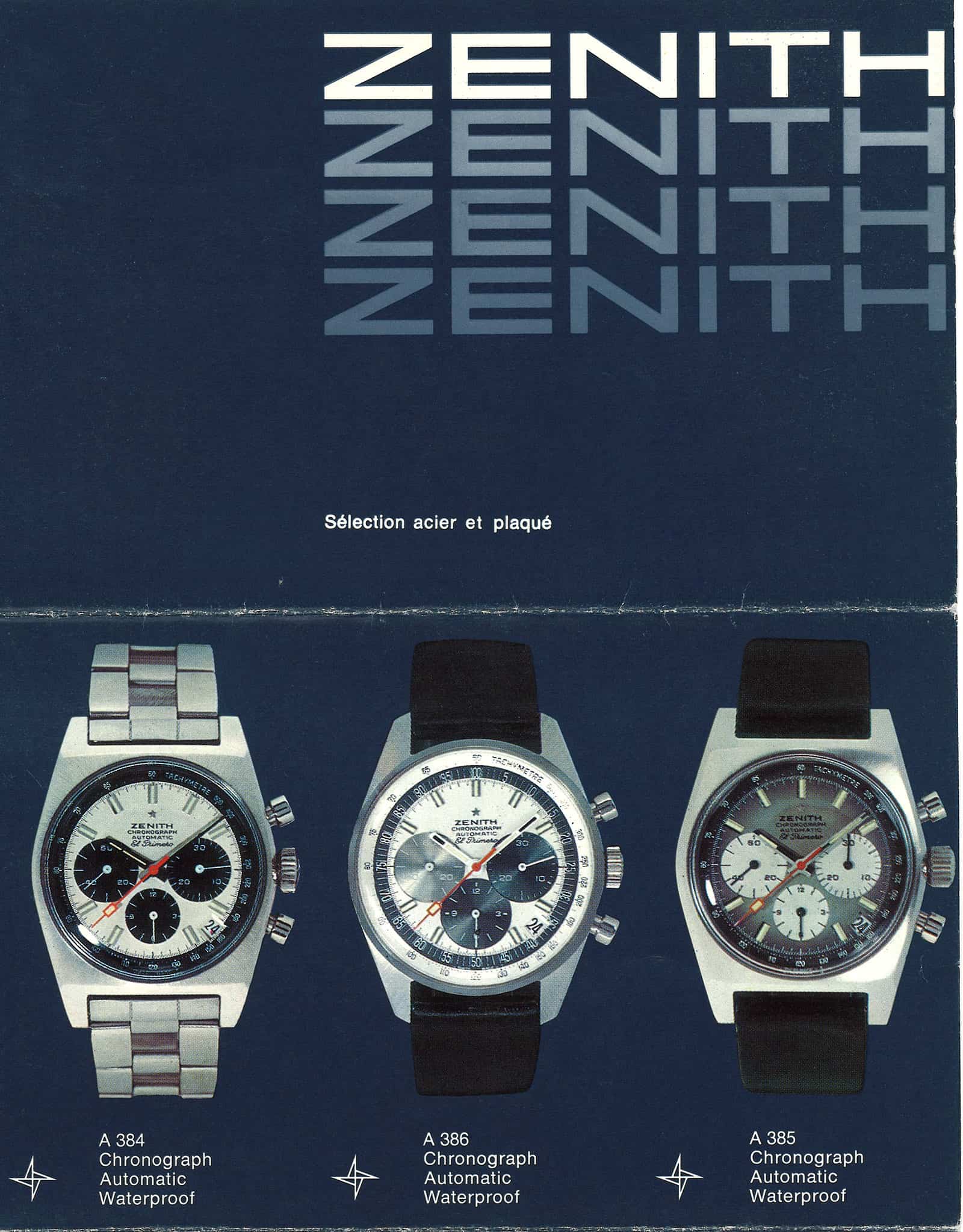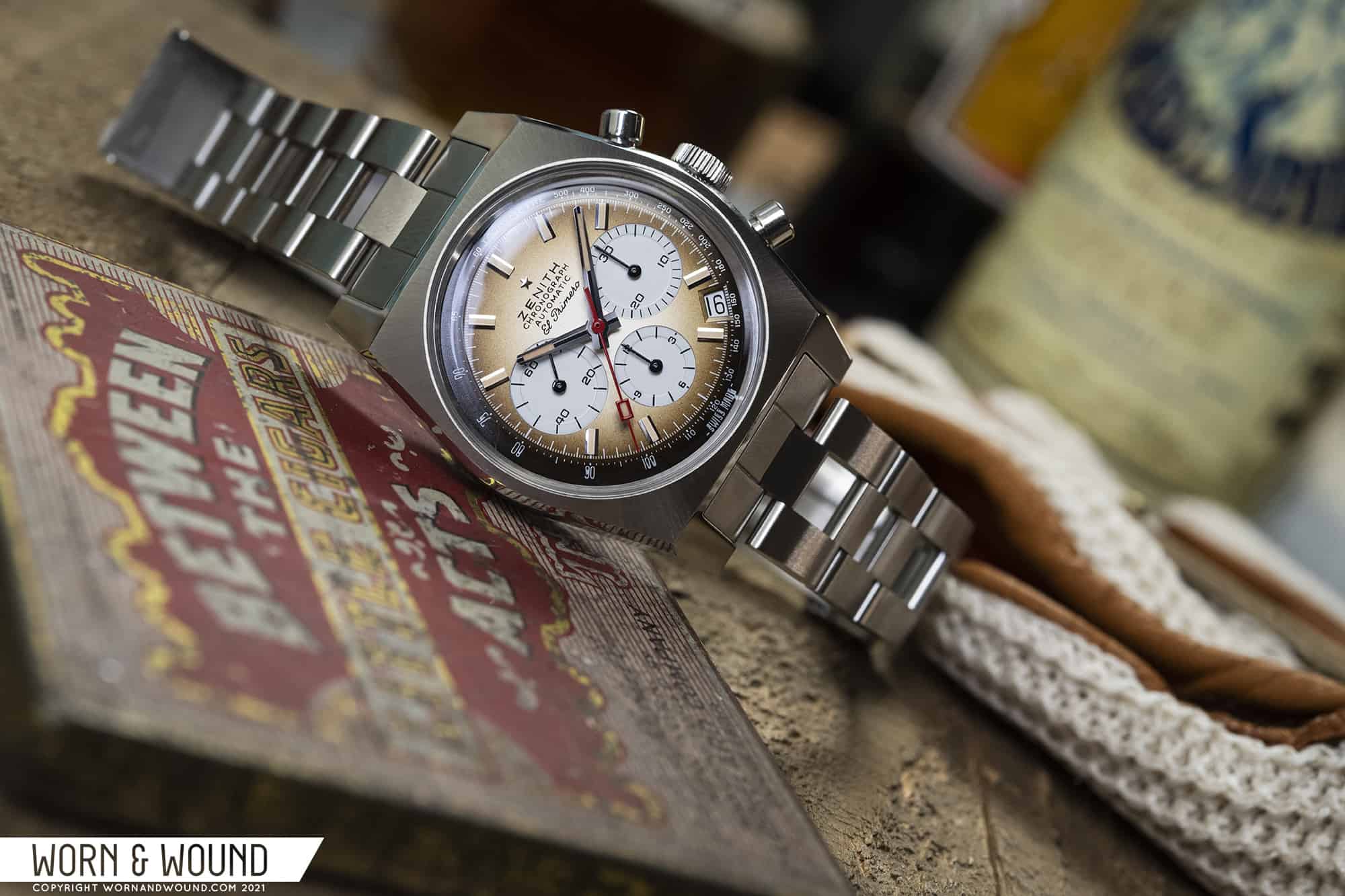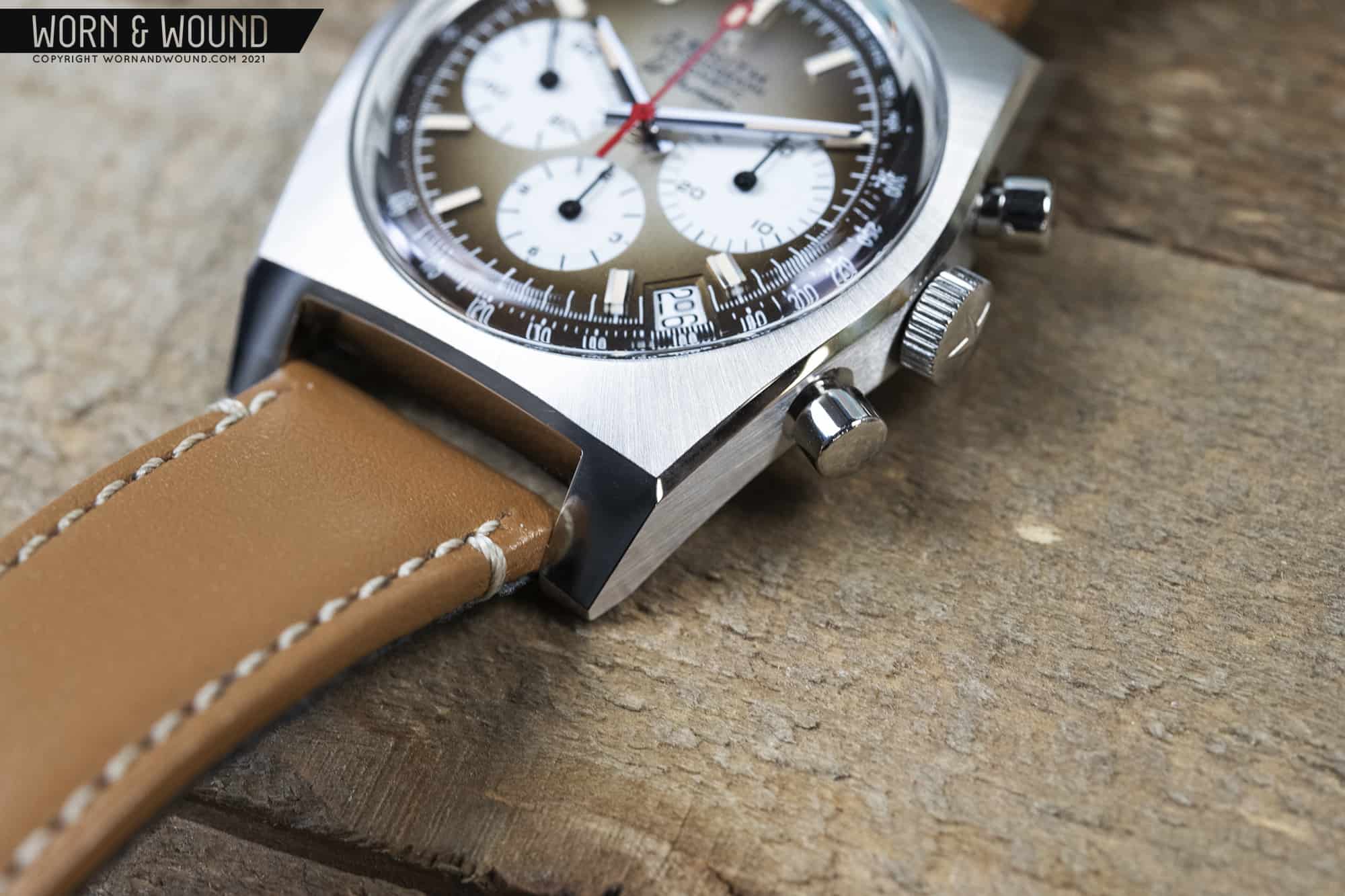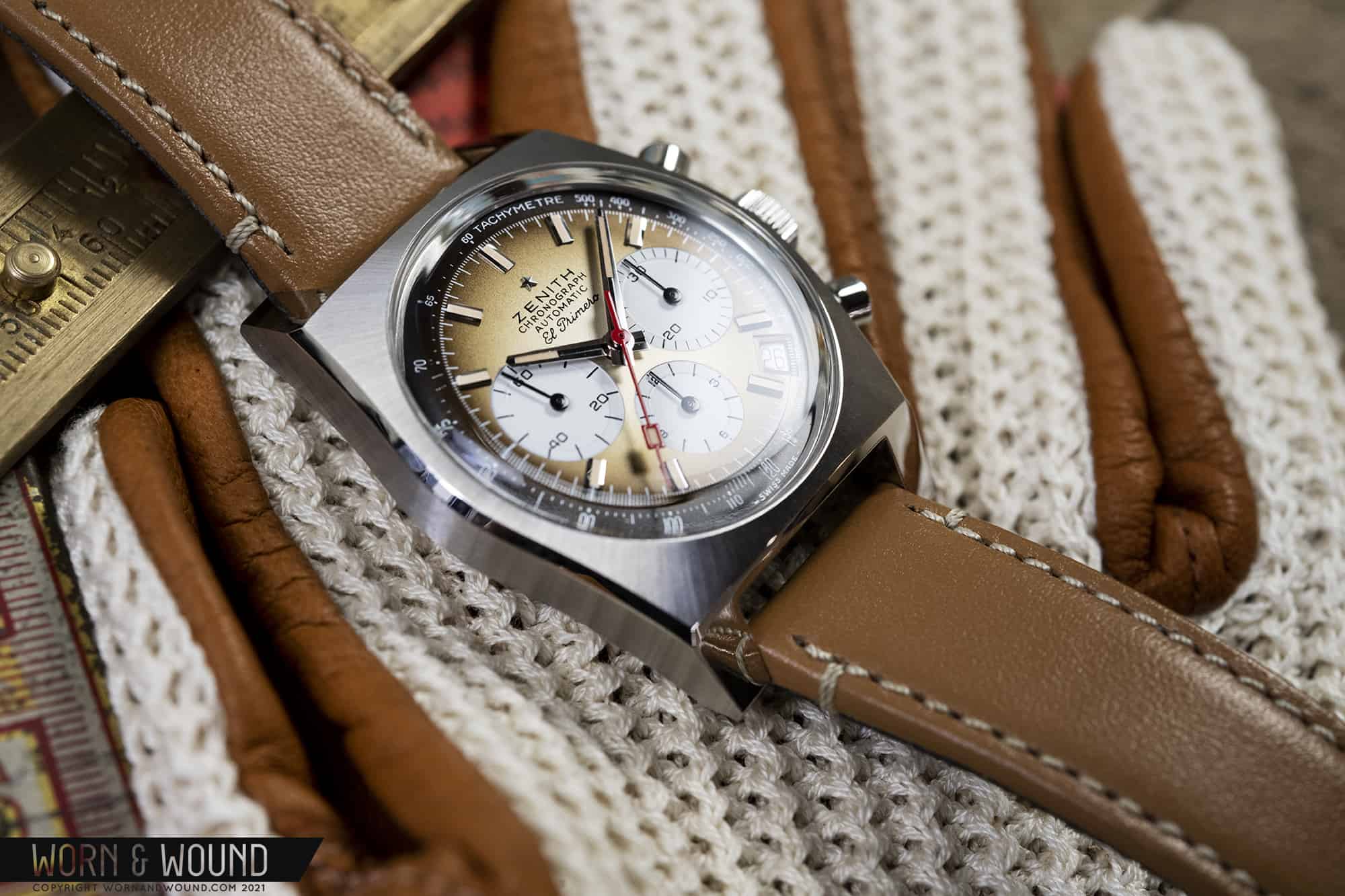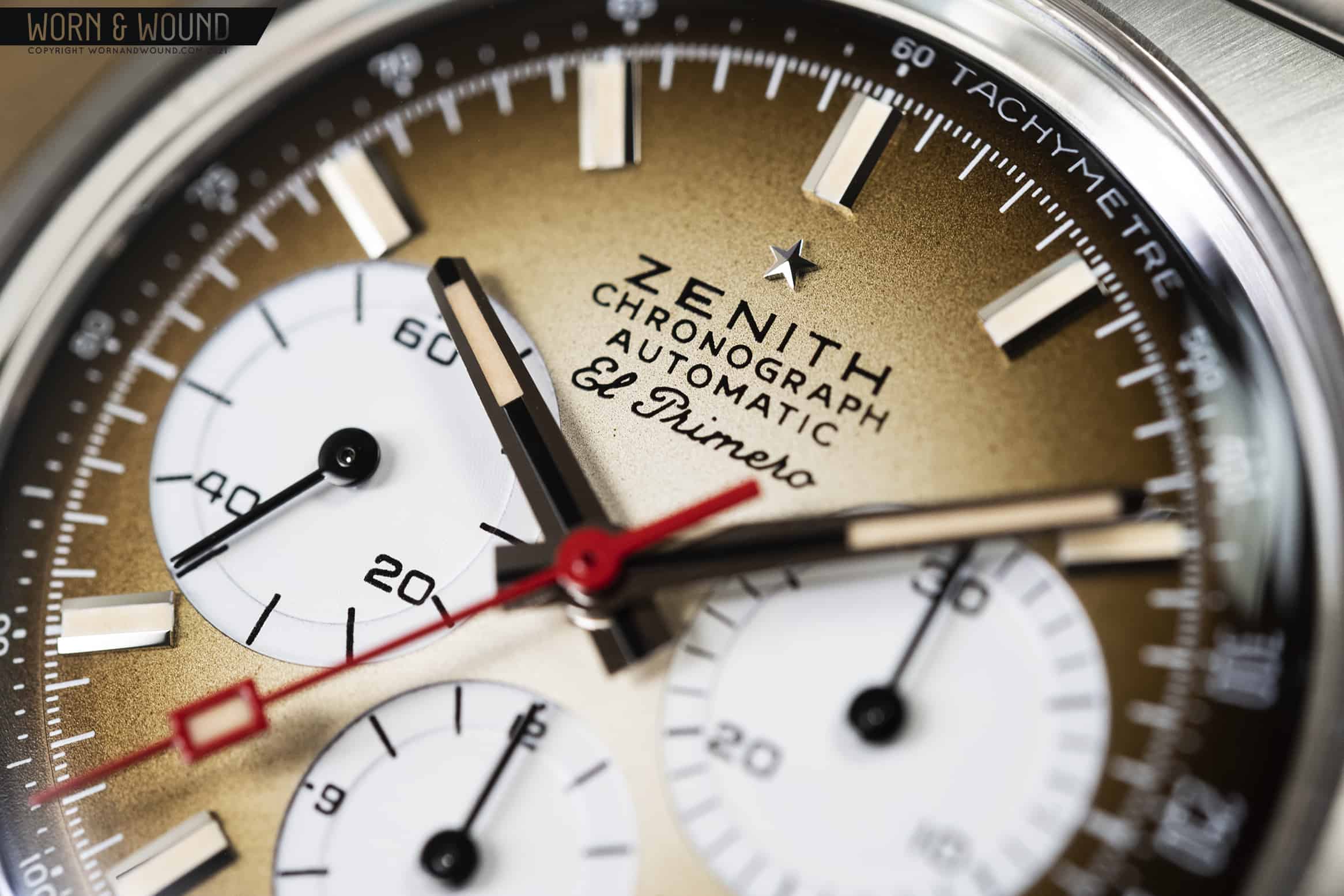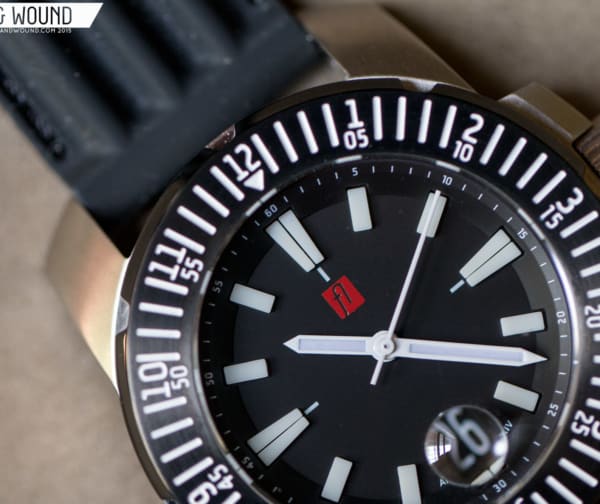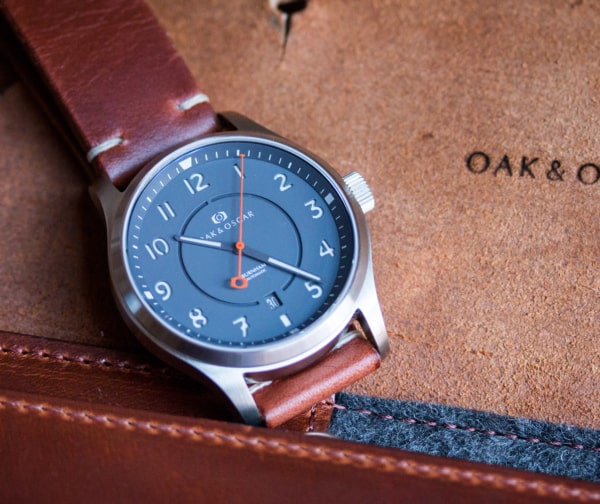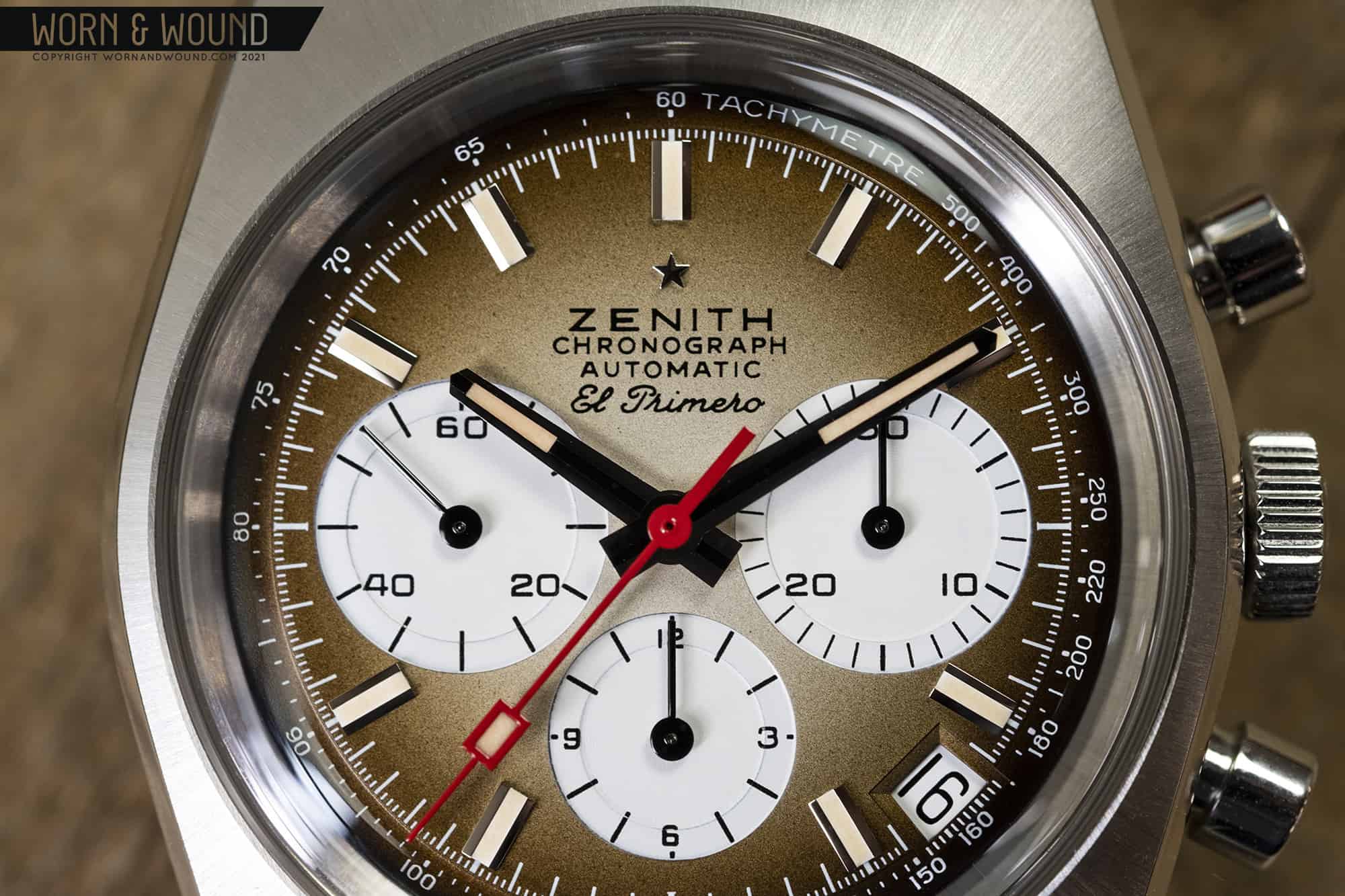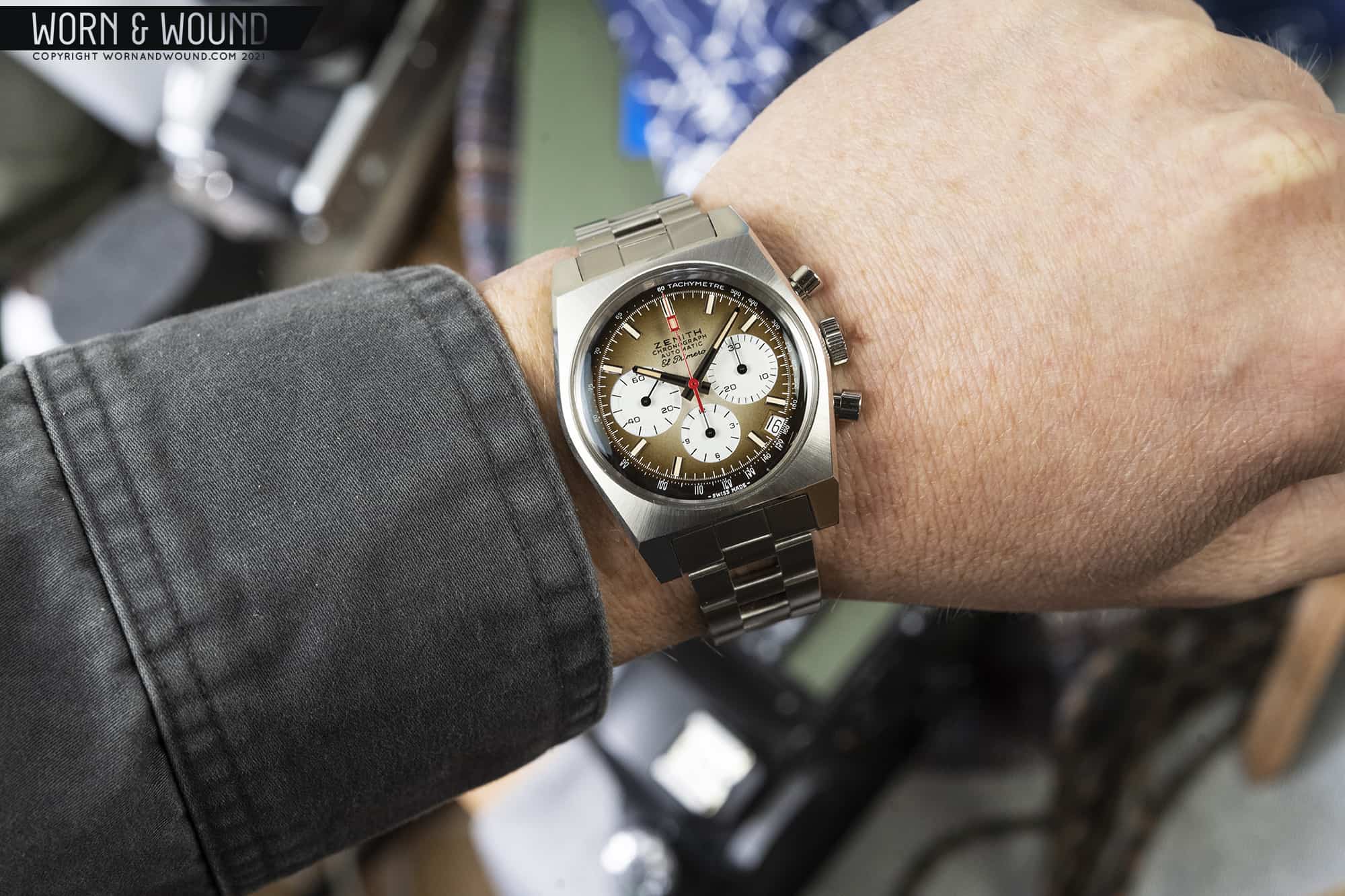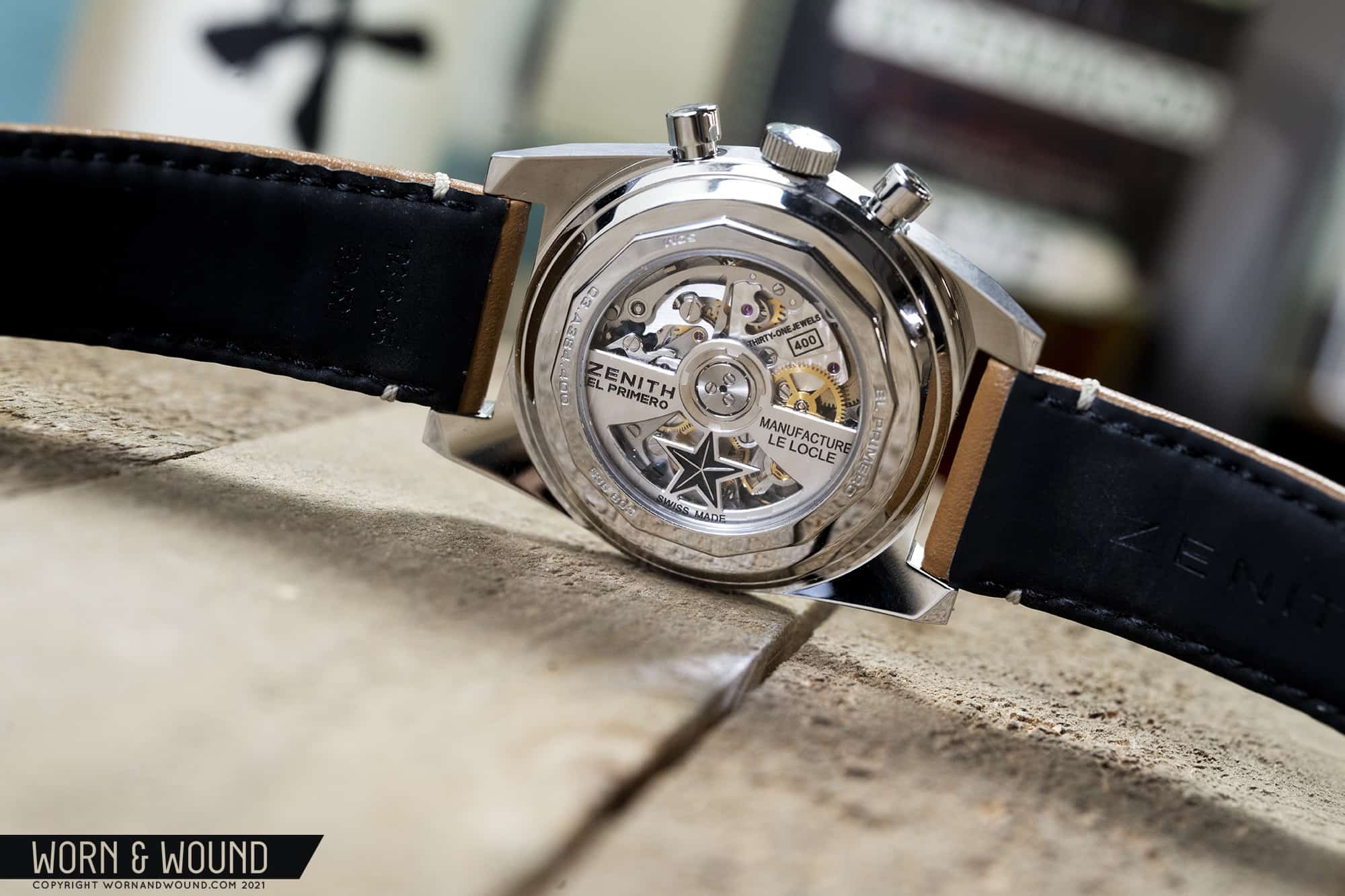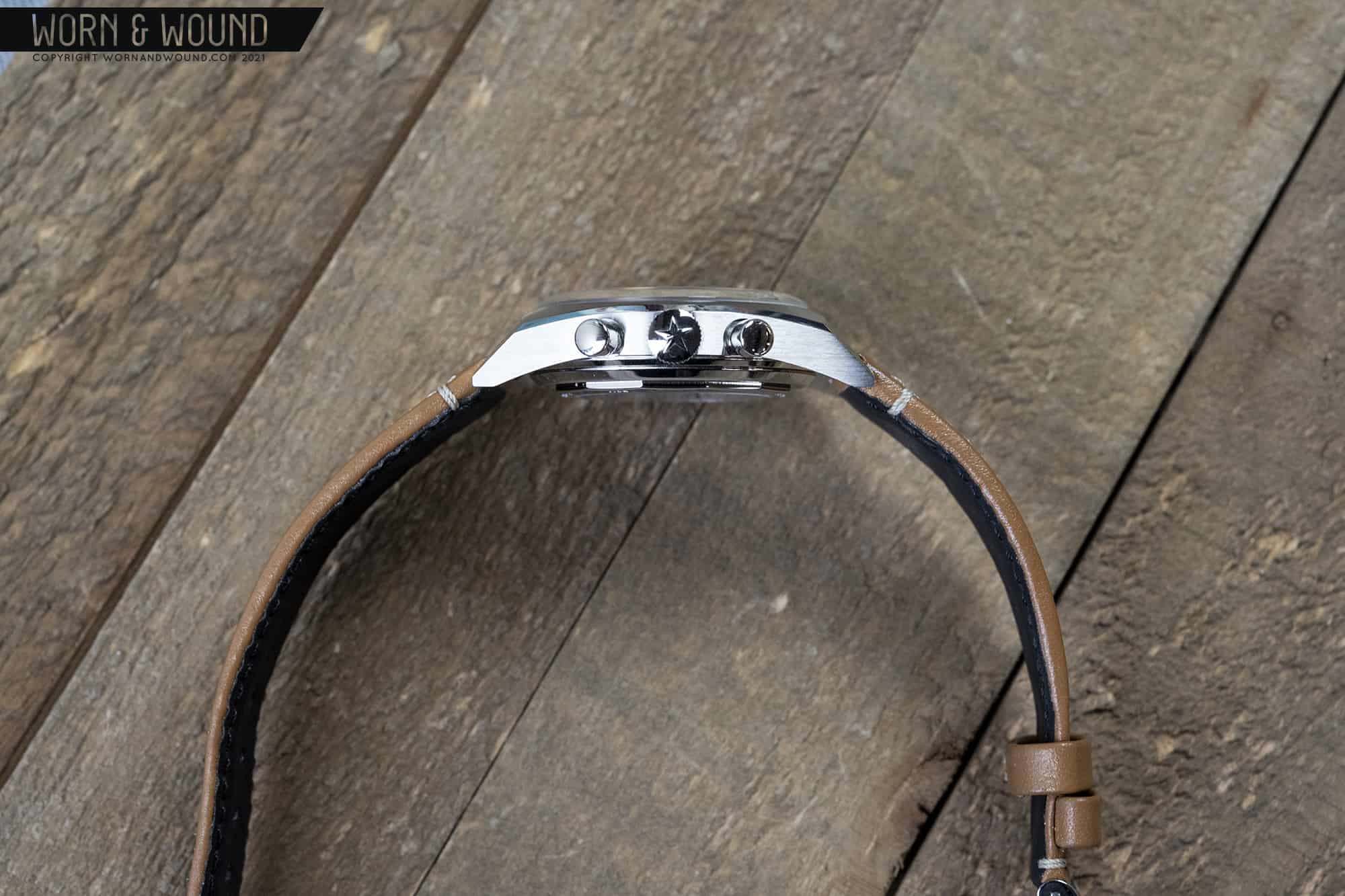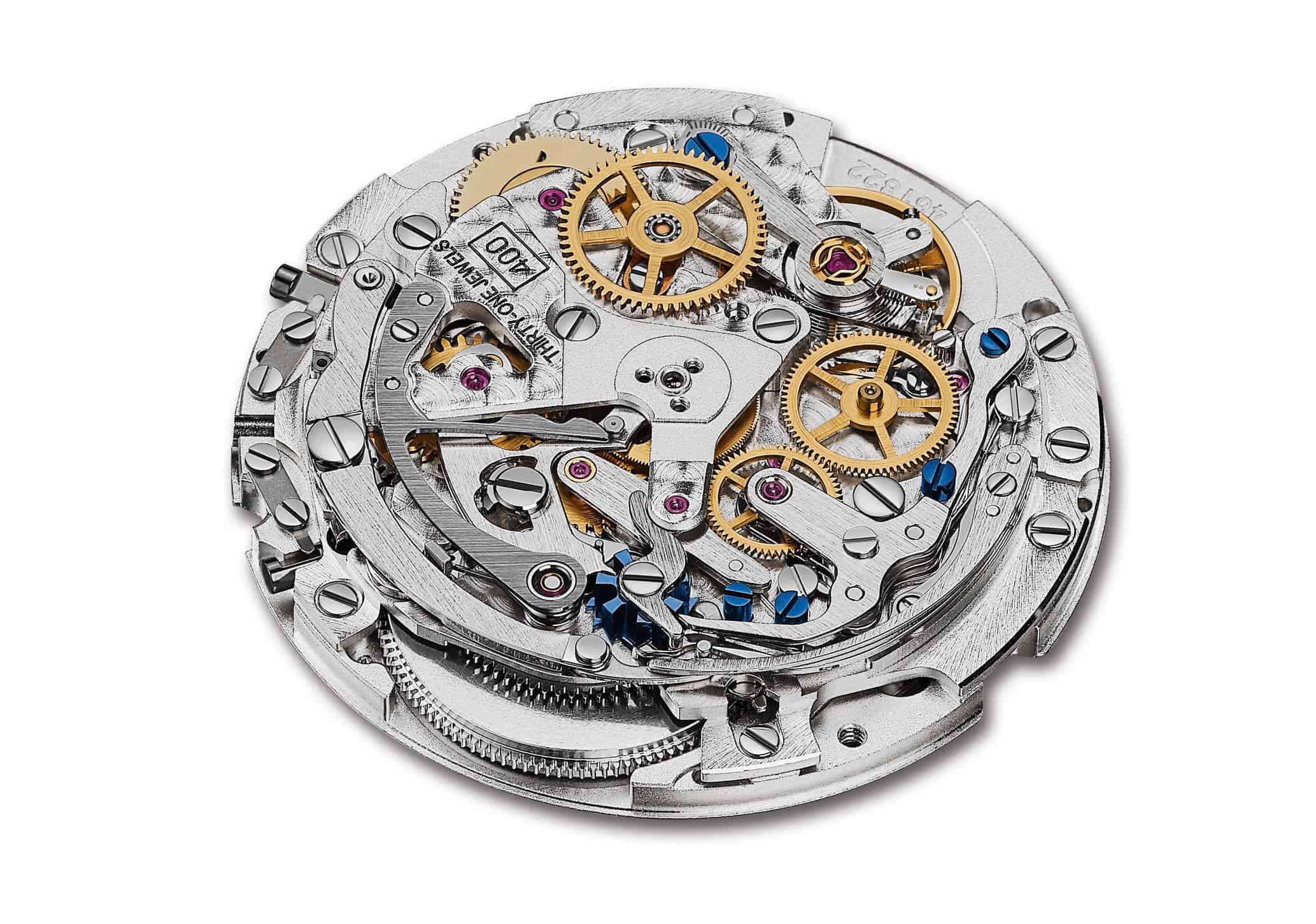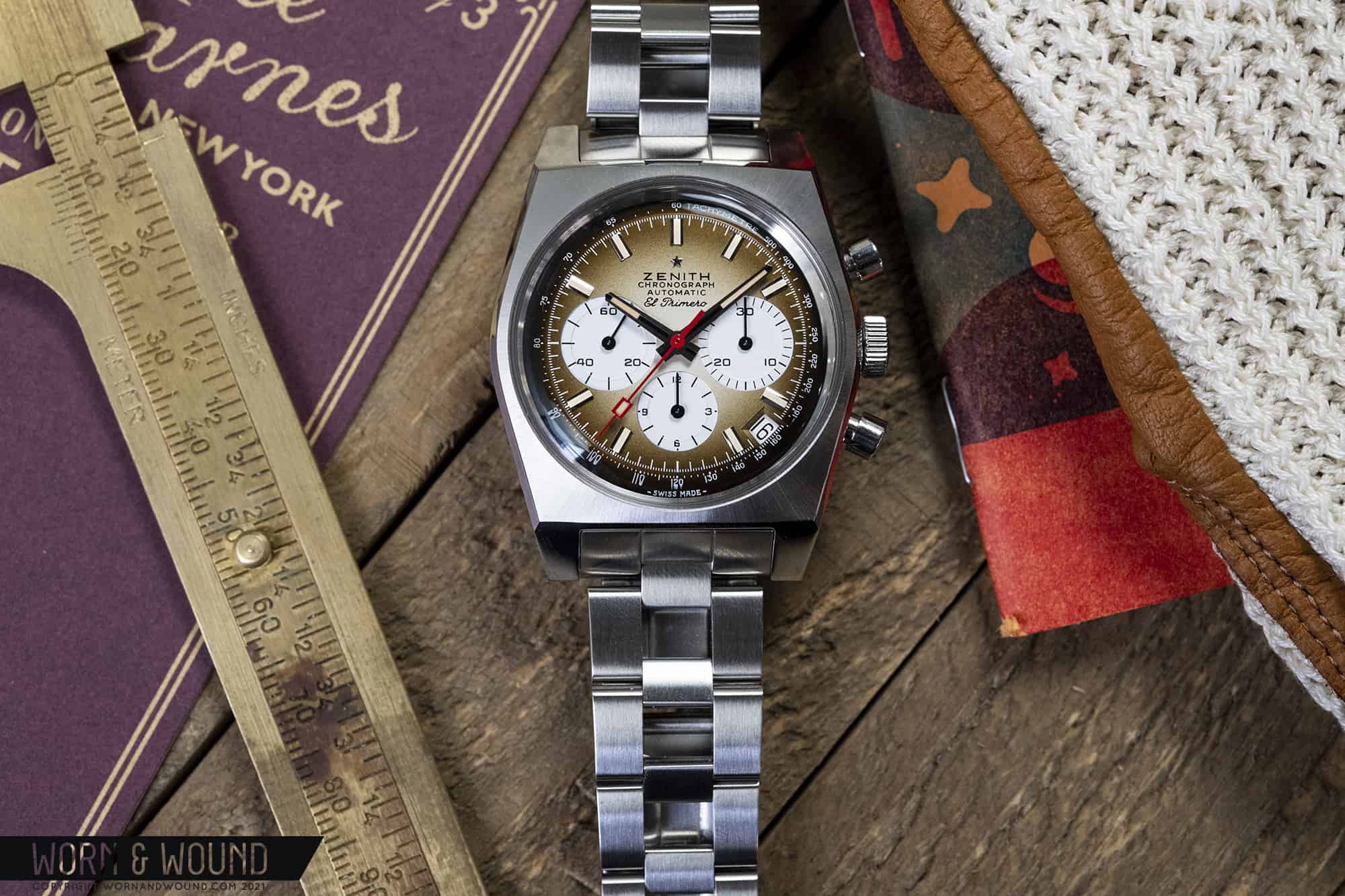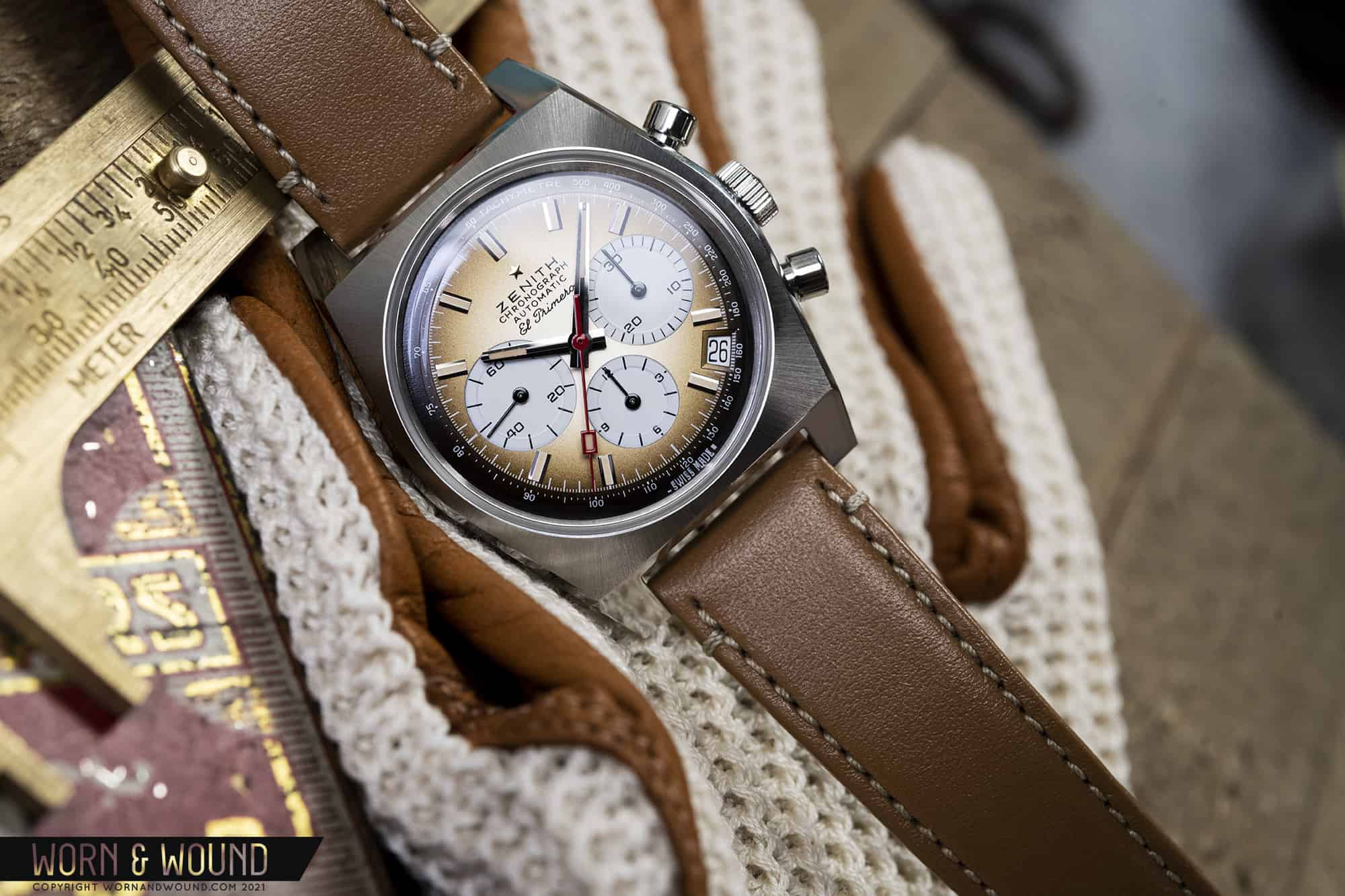Prior to the big reveal of their all-new Chronomaster Sport, Zenith quietly revealed the A385, the third reference of the Revival series, joining the A384 and A386. The trio pays homage to the original references of the same names first released in 1969, featuring Zenith’s El Primero in the push to release the first automatic chronograph alongside Seiko and Heuer/Buren/Brietling/et al. The A385 was perhaps the most dramatic of the bunch, boasting a smoked brown gradient dial under pure white registers. The A384 and A386 weren’t short on drama, either, but the A385 hit differently, embracing its era with confidence.
The Revival series kicked off in 2019 with Zentih celebrating the 50th anniversary of the El Primero, beginning with the A386. This watch uses a more traditional round case with the iconic tri-tone overlapping registers dominating the dial. The Revival was true to the original in its form, and each additional model has followed suit, including the A384 which also came in 2019. It’s worth noting that none of these employed the use of any faux aging, rather they’ve been produced as they would have looked when produced in 1969.
Following additional dial options and a few Limited Editions, finally the A385 was revealed just this year, a little late for the anniversary, but a welcome release nonetheless. I’ll just come right out and say it, I found this dial stunning when I first saw the images. In person, it is somehow even better. While the watch is not without fault, the recreation of this dial creates a pretty big blind spot in recognizing them.









 Featured Videos
Featured Videos




